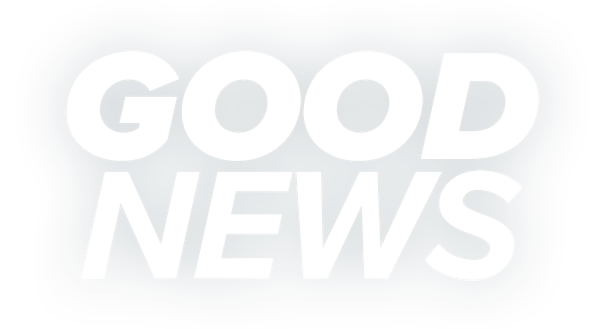In 2019, Taylor Swift — a Caucasian cisgender heterosexual woman — gave us the iconic line, “Shade never made anybody less gay,” in her song You Need Calm Down.
And this year Youtubers Aba and Preach — two Black Canadian cisgender heterosexual men — used the phrase, “It’s giving…” in one of their videos.
Related:
Being a queer stepmom is not at all what I thought it’d be. It’s better.
The unique bond I have forged with my stepsons would not have been possible any other way.
Both shade and it’s giving are colloquial phrases that were once exclusive to the queer community. These days, people of all races and orientations use queer slang like this to express excitement, shock, and even disdain.
Never Miss a Beat
Subscribe to our newsletter to stay ahead of the latest LGBTQ+ political news and insights.
Similar to African-American culture, queer culture plays a key role in pop culture today. In fact, much of what is said to be iconic is, in fact, queer.
While the queer community has come a long way in accruing both rights and acceptance, we still live in an anti-LGBTQ+ world. So, how can we explain the oppressive majority now emulating the marginalized minority?
Queer slang, also known as lavender language, has existed for a long time. Some of the earliest and most prominent examples of lavender language are Polari, Gayle, and Swardspeak.
Polari is a secret language said to have originated in the 19th century. It has Italian and Mediterranean origins and was originally used by gay men within the entertainment industry.
Today, Polari is most known for its usage among gay men in Britain in the early 20th century, when homosexuality was criminalized.
Polari words that still have relevance today include butch, femme, drag, and using she as the dominant pronoun even when referring to someone who’s male.
Gayle, also known as Moffietaal (which loosely translates to gay language), originated in the mid-60s in South Africa. It was primarily used by queer coloured people (while colored is a pejorative term in the US, in South Africa it is racial classification referring to multiracial people who are of mixed African, Asian and European descent) but has evolved into a language spoken by more than just queer folks.
What makes Gayle different from Polari is that it uses a combination of women’s names and Afrikaans slang to describe other gay people or gay experiences. For example a “Polly Papagaai” is a gay man who gossips (“papagaai” means “parrot” in Afrikaans); an “Adele adder” is a vindictive gay man (“adder” being a kind of snake).
Swardspeak is a language derived from Tagalog and English as well as random celebrity names and objects. It was born in the 1970s and has since then become mainstream in the Philippines.
Some examples of Swardspeak include “Tom Jones” which means having a crush on someone. And, “Tinderella” which refers to a woman who uses Tinder.
In the US, lavender language came from the New York City ballroom scene of the 1980s. This is where terms like shade, it’s giving, gagged and work originated (Britney Spears just entered the chat).
While these languages are vastly different, they have one tie that binds them: They originated as a way for queer people to identify one another without it being obvious to straight people.
With these languages in mind, it is clear that gender identity and sexual orientation shape our identities and the language we use similarly to factors like race, disability and geography.
It’s safe to say, then, that without this unique form of otherness, queer people wouldn’t have queer slang or culture all their own and pop culture would have no queer muse to draw from.
Everywhere you go, be it in real life or on the internet, you will hear phrases like gagged, ate, and it’s giving used by people of all races, orientations and even generations. While queer slang is mostly used by Gen Z, other generations use it too. We can attribute that to the presence and popularity of queer shows like RuPaul’s Drag Race.
According to Dr. Mary McConner, a Certified Diversity Executive (CDE), “One of the biggest reasons why queer slang is so popular today is due to the rise of social media.”
“Platforms like TikTok and Twitter have become breeding grounds for trends and memes,” Dr. McConner told LGBTQ Nation. “Queer slang often gets picked up and spread widely through these channels and reaches a broad, global audience.”
Youtube is also flooded with videos of queer people testing straight people on their knowledge of queer terminology.
As a queer person, it is amazing to witness not only the acceptance of queer culture but also its “idolization.” But adapting this language also has its dangers.
“Using queer slang to sound cool or trendy without understanding the cultural context can be problematic,” McConner explained. “Slang often carries historical weight with the community it originates from. It is important to understand where specific slang comes from and how its usage might be perceived.”
According to Linguist Adam Aleksic (@etymolognerd on TikTok), there is a formula to how language spreads on social media: “Straight white girls adopt what gay and Black people are saying, and then everyone else adopts what straight white girls are saying.”
“White women tend to be closest in the social circles of gay men, and often end up adopting their slang because of that proximity,” Aleksic told LGBTQ Nation. “Young women particularly tend to be more receptive to language change, so they’re more likely to adopt new words than straight men of the same age.”
Judging by the spike in the usage of queer terms online, on television, and in real life, it’s safe to say that queer slang isn’t going anywhere anytime soon.
But with the rise of its popularity, it’s important for anyone adding queer terms to their lexicon to be especially aware of the cultural context of these terms to avoid appropriation. Neglecting to do so could ignite anger and distrust similar to that of Black people when it comes to Caucasian people appropriating their culture.
All things considered, it’s still meaningful to witness queer culture being uplifted and celebrated this way. We may still have a long way to go, but the impact queer language has on pop culture is something to celebrate this Pride month.
Don't forget to share:
















